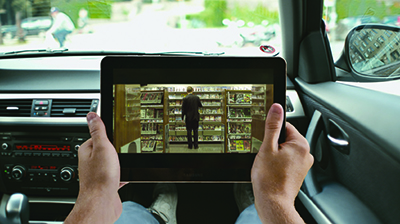Mobile Video Must Rise to Cable’s Playback Standard
An abundance of streaming services and video content has led to a rise in mobile video viewership, with 62% of global video views happening on the phone or tablet. Whether the viewer is looking to watch a prestige TV series, an award-winning movie, a live sporting event or a short video, they all expect the same thing: when they hit the play button, the video will start instantly and play flawlessly.

Unfortunately, there are still times where the viewing experience fails to match viewer expectations. Slow start times and buffering are still major issues for mobile video. As media companies invest billions of dollars to build streaming services and produce content, even small issues in the playback experience could derail them, regardless of whether the service itself is at fault.
A 2018 study conducted by OpenSignal gave countries around the world qualitative scores on their overall mobile video experience. The U.S. ranked near the bottom with a 47 out of 100. (75-100 is Excellent, 65-75 is Very Good, 55-65 is Good, 40-55 is Fair and 0-40 is poor.) That’s in a developed nation. In India, a country where mobile video viewership is exploding, the mobile experience is even worse. (This is not good for a service like Netflix, which recently announced major plans to expand into the Indian market.) The country that ranked highest in the study, the Czech Republic, still only got a score of 68.
This shows that there’s a lot of room to improve when it comes to mobile video. In fact, in a more recent OpenSignal study, the four largest US carriers—Verizon, Sprint, AT&T and T-Mobile—were rated as merely “fair” providers on the mobile video quality scale. The study cited prolonged stalling and long wait times for high-resolution video. And that’s not acceptable.
Mobile video is still talked about as a “new” technology, which means it gets graded on a curve. It’s somewhat similar to mobile advertising, where ad buyers are told that they’re overachieving if even 70% of their video ads are actually seen. Mobile video buffering used to be really bad, so now that it’s OK, everyone seems to accept that as a victory. But viewers themselves aren’t going to stand for minor improvements. In this era of cord cutting, consumers don’t see mobile video as an emerging replacement for TV. It is TV in viewers’ eyes, and they’re comparing their mobile video experiences to the cable experience.
Cable customers are rightly dismayed if a channel change takes longer than a fraction of a second, and cable operators task dozens of engineers to fix the problem. If cable subscribers experienced poor experiences like buffering and degraded picture quality on a regular basis, they would look for an alternative provider or cancel their subscription. In this regard, OTT services need to start acting like cable operators, striving for 99.99% availability and reliability. We need to fix the quality and reliability problems wherever they occur, from the origin cloud to the last mile.
And the time to act is now. Mobile video providers content to wait for the worldwide deployment and adoption of 5G or some other magic bullet will be the losers in the intense battle for mobile viewers already well underway. It’s time for the mobile video industry to pull out all the stops and effectively present an experience that resembles traditional TV when it comes to quality and reliability. Rather than aim for modest year-over-year improvements in buffering and other performance standards, the industry needs to aim for something much closer to 99.99%.
Dan Taitz is known for transformative work with some of the biggest names in media, including Martha Stewart Living Omnimedia, Univision Communications and Oxygen Media, where he negotiated the sale of the company to NBC Universal. As president and COO of Penthera, Dan has a deep understanding of how video service providers can create a deeply-engaging, consumer friendly experience in the mobile video space.
Get the TV Tech Newsletter
The professional video industry's #1 source for news, trends and product and tech information. Sign up below.
